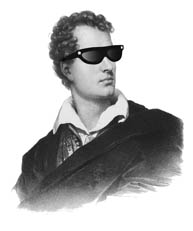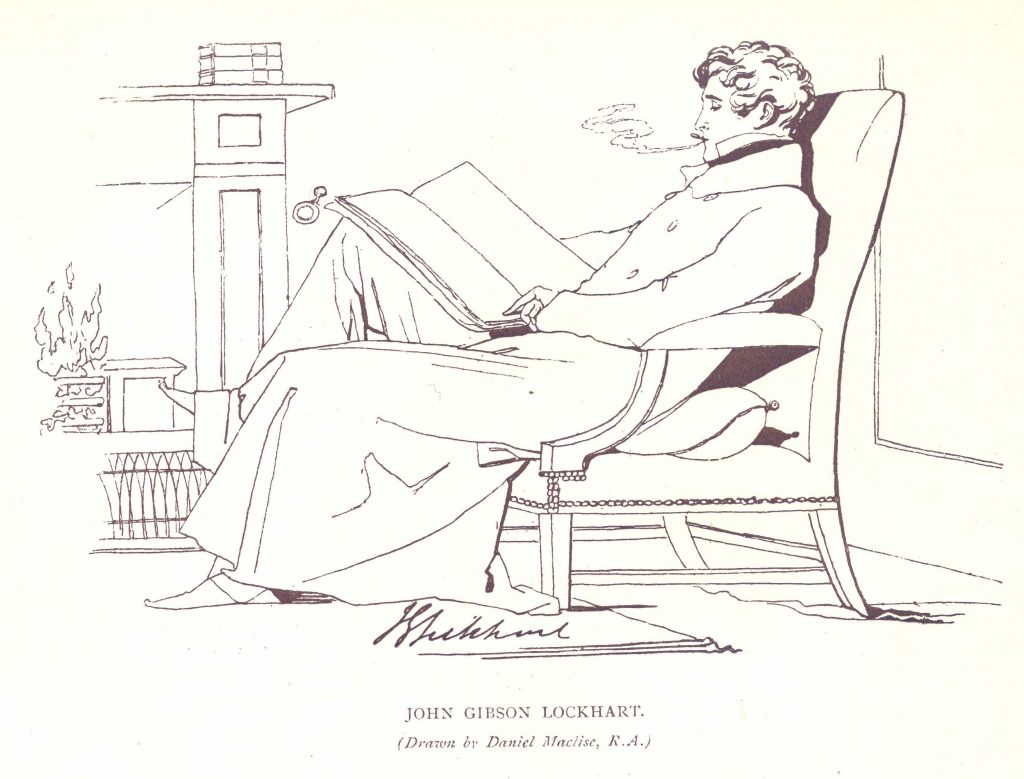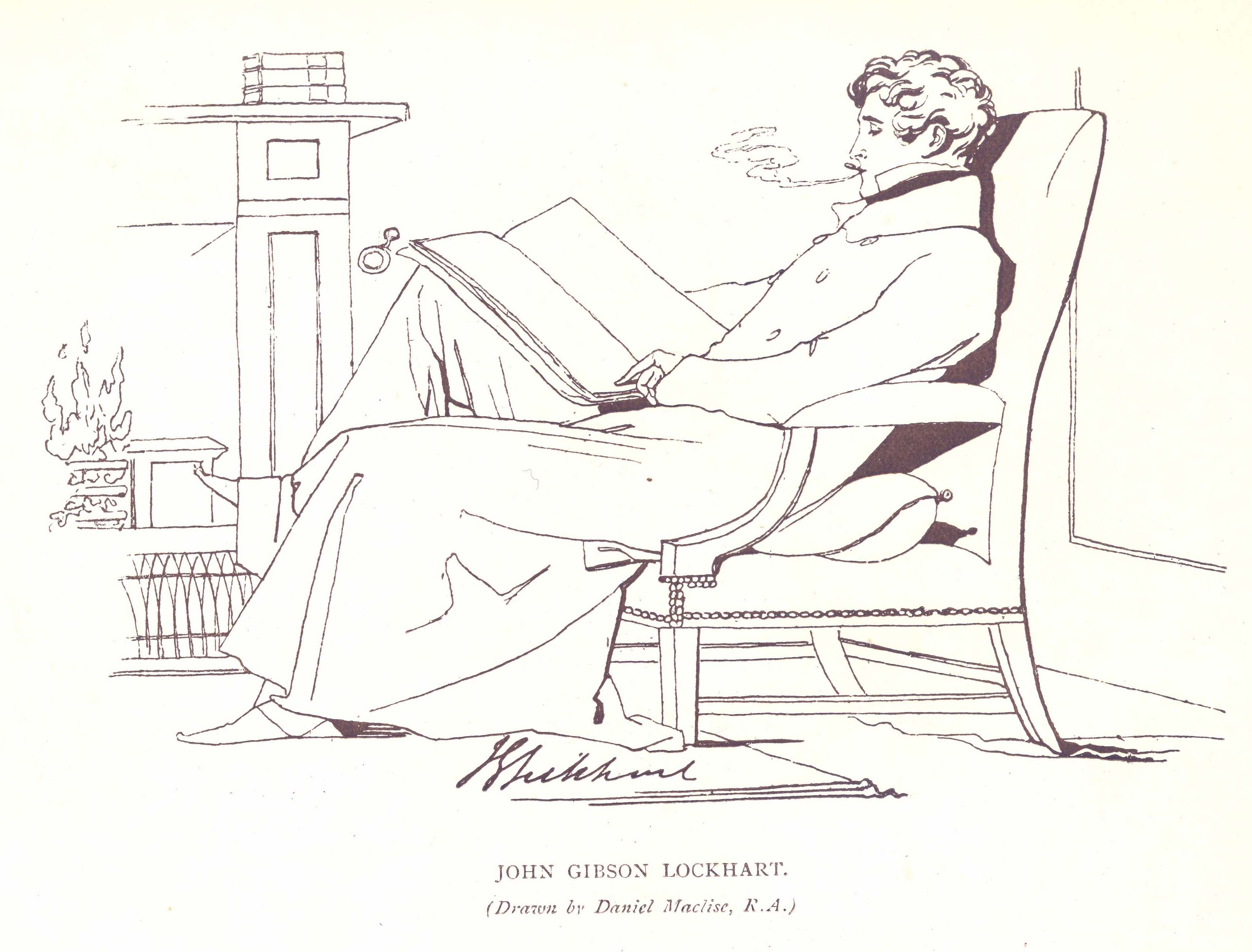Tom Mole discusses the cultural history of literary celebrity with Rebecca Braun
Part of the Authors and the World research hub.
September 2014


Tom Mole discusses the cultural history of literary celebrity with Rebecca Braun
Part of the Authors and the World research hub.
September 2014
by John Strachan
European Romantic Review, 21.4 (2010), 489-92.
by Ghislaine McDayter
The Byron Journal, 37.2 (2009), 171-73.

McGill Reporter – 7 February 2008 – View as HTML
Britney Spears has been admitted to a psychiatric hospital. Posh Spice has a new tattoo. Paris Hilton has been photographed wearing five different outfits in one day. And Amy Winehouse has gone to rehab after all.
These are just a few of the stories that have emerged from the seemingly unstoppable industry of celebrity gossip in the last week. While Britney and Amy are obviously in crisis, it’s business as usual for Paris and Posh. Yet these stories are reported next to each other as though of equal importance. They also appear alongside coverage of more newsworthy events, such as the battles for U.S. presidential nominations. But even that sometimes seems more about celebrity gossip than substantive policy. With Oprah stumping for Obama, Arnold Schwarzenegger supporting John McCain and Chuck Norris (who?) endorsing Mike Huckabee (who?), action heroes and daytime divas have generated almost as many column inches as some of the candidates.

We live in a culture saturated in celebrity, where the logic of celebrity seems to be rapidly colonizing all areas of public life. New starlets appear (Hello, Paris), old stars fade away (So long, Chuck), and images are reinvented (Welcome back, Arnie). How should we understand this situation, and where did it come from?
Although, as a culture, we are obsessed by celebrities, very few of us have given much thought to the history of celebrity culture. Most of us assume that we’ve always had celebrities, or that our fascination with celebrities is unprecedented in its intensity. But neither of these assumptions is true.
Celebrity culture began at an identifiable point in the past and we can track its historical shifts with some precision. Some have suggested celebrity emerged with the development of film at the end of the 19th century. I suggest that they’re right to link celebrity with a new technology, but they’ve got the wrong one. The crucial technology was a better printing press, and the innovations leading to it occurred some 100 years earlier.
Industrial printing, rising literacy rates and improved distribution infrastructure created a sense of “information overload” never before experienced. These conditions also left readers and writers feeling alienated from each other. Unlike earlier ages when manuscript circulation or subscription publication was the norm, there was no longer any prior connection between them. Celebrity culture originally emerged to solve these problems. Authors, publishers, artists, engravers and journalists worked together to brand an individual’s identity so he or she would stand out from the crowd. As a result, actors such as David Garrick, sportsmen such as the boxer Daniel Mendoza and authors such as Lord Byron became the first modern celebrities.
A new vocabulary was required to refer to these new figures on the public stage. In 1751, Samuel Johnson recalled a time when he “did not find [him]self yet enriched in proportion to [his] celebrity.” He used the word to name a desirable personal attribute for the professional man of letters. A century later, in 1849, a character in one of Dinah Mulock Craik’s novels asked, “Did you see any of those ‘celebrities,’ as you call them?” Using a form of the word that was evidently still unfamiliar, Craik employed it as a concrete noun. Something important about the nature of fame had changed in the century that separated Johnson from Craik. Celebrity was no longer something you had, but something you were.
Celebrity culture helped people to feel less detached from their idols by giving the impression that to read a poem by Byron or to look at a picture of Garrick was to experience a kind of relationship with them. In my book on Byron, I call this “the hermeneutic of intimacy,” because it’s a way of reading that constructs a powerful emotional connection between the celebrity and the consumer.
In the age of 24-hour gossip, you can get more updates about Britney or Amy than you get about the lives of your own family. Some devoted fans feel emotionally closer to their idols than to almost anyone they’ve met in the flesh.
So next time you open a magazine to check out the latest long-lens pictures of Britney’s public meltdown, take a moment to zoom out and remember that you’re taking part in a cultural phenomenon whose history stretches back farther than you might think.
Tom Mole is an assistant professor in the Department of English and the author of Byron’s Romantic Celebrity (Basingstoke: Palgrave, 2007). He is currently editing a collection of essays called Romanticism and Celebrity Culture 1750-1850, to be published by Cambridge University Press.
by Tilar J. Mazzeo
The Byron Journal, 36.1 (2008), 67-68
1750-1830, by Claire Brock
Romanticism, 14.3 (2008), 289-91.
ed. Mary Luckhurst and Jane Moody
Theatre Notebook (2007)
by Susan Oliver
British Association for Romantic Studies Bulletin and Review 26 (Winter 2006)

Re:Search Magazine Online, University of Bristol
June 2006 – View as HTML
 Delve into the mysteries surrounding the early editions of Blackwood’s Magazine.
Delve into the mysteries surrounding the early editions of Blackwood’s Magazine.
Afterwards, everyone remembered it as a misty night. It was cold too, and the two men came wrapped in military-style cloaks. They were accompanied by seconds and armed with loaded pistols. On Friday 16 February 1821, two men fought a duel in Chalk Farm and one of them lost his life. The dead man was John Scott, editor of the London Magazine.
His assailant was Jonathan Henry Christie, representative of Blackwood’s Edinburgh Magazine. Scott had attacked Blackwood’s for its slashing reviews of Leigh Hunt, William Hazlitt and John Keats. Blackwood’s had responded with the kind of invective that was its stock in trade. As tempers flared, a point of honour appeared to be at stake and the increasingly acrimonious rhetoric that appeared in the magazines boiled over into bloodshed.
Things hadn’t always been so heated. Blackwood’s initially claimed that ‘we wish our Magazine to be open to liberal discussion’, imagining its pages as an ongoing conversation written by its readers. But the Blackwood’s writers – many of whom had legal training – preferred adopting adversarial legal models.
The metaphor of the magazine as a courtroom became explicit in articles such as ‘Hazlitt Cross-Questioned’ and ‘Letter from Z. to Leigh Hunt’, where John Gibson Lockhart wrote, ‘My October paper was merely an opening of the case; I said, as plainly as words could speak it, that the examination of witnesses, and the closing address, would both follow in their season’. Courtroom metaphors in turn gave way to images of assault. Hazlitt would be ‘stripped to the naked skin, and made to swallow his own vile prescriptions’. And when controversy between Blackwood’s and the London Magazine reached flashpoint in 1821, images of violence gave way to actual violence. Conversation became prosecution, prosecution became assault, and assault – in one tragic case – became killing
For modern readers without access to long-established research libraries, it has been difficult to find out why Blackwood’s made people’s blood boil. Those who encountered Blackwood’s first-hand often found it inaccessible in another sense. Blackwood’s can be daunting in its range of reference, frustrating in its casual attitude to citation, and rebarbatively embedded in debates whose other participants are not always apparent.
Over the past three years, I’ve been part of a team working on Blackwood’s. We’ve produced a six-volume set of selections from the magazine’s infancy, including poetry, stories, book reviews and critical essays. Reviews published in Blackwood’s and its rivals have traditionally been called on as ‘context’ to flesh out the historical study of literature. We aim to promote them from that marginal position and make them a subject for study both in their own right and as part of a more sophisticated and wide-ranging understanding of nineteenth-century print culture.
From Blackwood’s earliest issues, John Wilson (1785-1854) and John Gibson Lockhart (1794-1854) contributed most of the reviews and helped to shape the magazine’s characteristic critical style. Both men were born in Scotland and both enjoyed brilliant academic success at the University of Glasgow and subsequently at Oxford University (although they narrowed missed overlapping at either institution). Both trained for careers in the law, but both had literary ambitions.
When William Blackwood re-launched the flagging Edinburgh Monthly Magazine under the masthead of Blackwood’s Edinburgh Magazine in October 1817, Wilson was 32 and Lockhart was only 23. Blackwood took a big gamble on the young men and their new style of reckless personal criticism.
The gamble paid off magnificently and within just a few issues Blackwood’s established itself as a journal whose reviews mattered
The main target of the magazine’s ire in this period was the ‘Cockney School’ of poetry – a poetically innovative and politically reformist group of poets including John Keats, who gathered at Leigh Hunt’s home in Hampstead. Writing under the pseudonym ‘Z.’, Lockhart labelled the Cockney School and then libelled the Cockneys, and Hunt in particular, in a series of vituperative articles.
In the first of the Cockney School attacks, Z. condemned Hunt by suggesting that his literary style, his political views and his social demeanour all displayed the same vulgarity. Hunt was a man of ‘extravagant pretensions both in wit, poetry, and politics, and withal of exquisitely bad taste, and extremely vulgar modes of thinking and manners in all respects’. His failings were all of a piece, and when Z. lambasted his poetic diction, his literary tastes, his social faux pas, his religious free-thinking or his disrespect for the Prince Regent, he was holding up to contempt different facets of the same essential flaw. Whatever he wrote, Hunt couldn’t help ‘betraying the Shibboleth of low birth and low habits’. These comments suggested that poetical failings could be mapped onto social, political and moral shortcomings.
Hunt was ‘as completely a Plebeian in his mind as he is in his rank and station in society’, and therefore aesthetics, politics and social standing could safely be elided. ‘One feels the same disgust at the idea of opening [Hunt’s poem] Rimini’, Z. suggested, ‘that impresses itself on the mind of a man of fashion, when he is invited to enter, for a second time, the gilded drawing-room of a little mincing boarding-school mistress, who would fain have an At Home in her house’. Leigh Hunt was caricatured as a tea-drinking fop, with yellow breeches and an open-necked shirt, whose ‘poetry resembles that of a man who has kept company with kept-mistresses’.
Blackwood’s repeatedly blurred the boundaries between literature and life, between aesthetics and politics and between art and morality in a rumbustious and unruly style that made for great fun, but whose consequences – as John Scott found out – could be deadly serious.
Blackwood’s Magazine, 1817-25 – Selections from Maga’s Infancy edited by Nicholas Mason, Anthony Jarrells, Tom Mole, Mark Parker and John Strachan, is published by Pickering and Chatto.